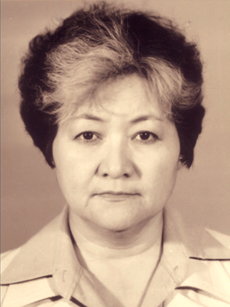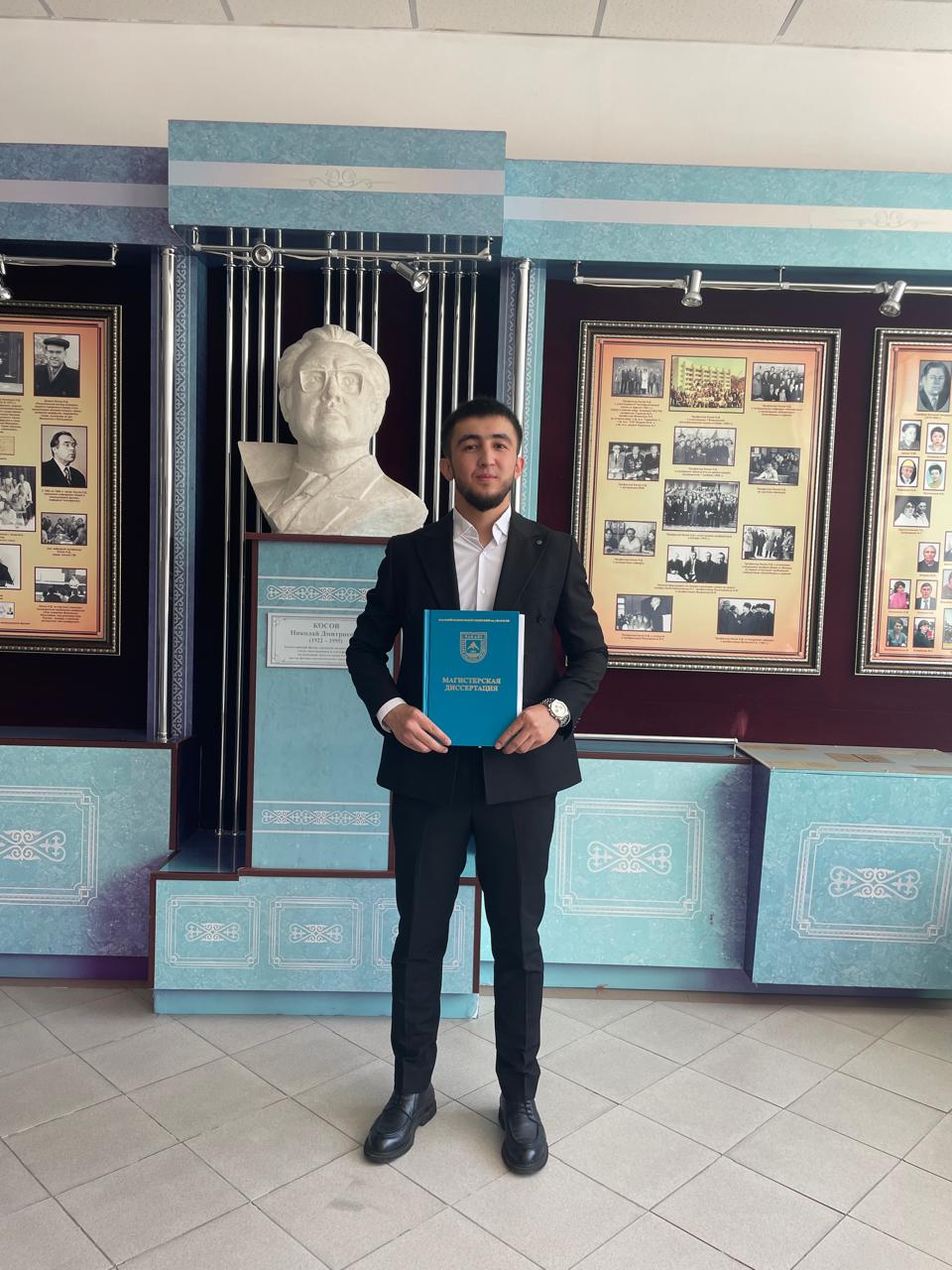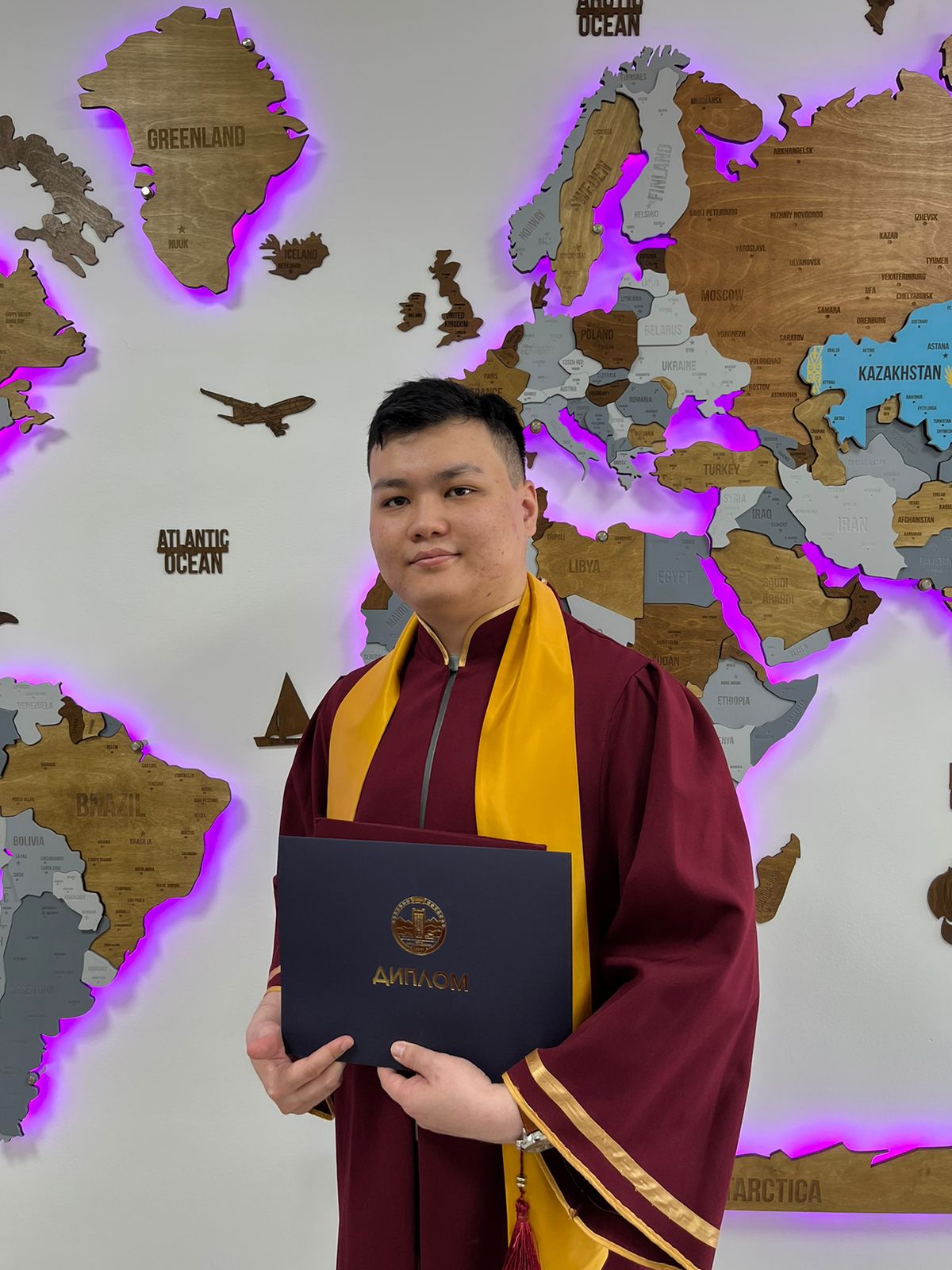
G.M. Alimzhanova was born in 1936 in Shymkent, where in 1932 her parents moved from Zhanibek district of the Ural region to avoid Goloshchekin repressions. Her father's entire family (the families of her elder three brothers and her parents) were exiled to Siberia.
Her father, Bainazarov Mazhit, worked as a head teacher of a Kazakh secondary school, taught mathematics, died at the war front in 1943. Her mother, Bainazarova Raihan (1910-1982) worked in agricultural work during the war. After moving to Alma-Ata from 1948 until her retirement she worked as a seamstress-motorist at the sewing factory named after Y.A. Gagarin. She was awarded the Order of the Red Banner of Labour, was elected a member of Kazsovprof.
Gulbakhram graduated in 1954 from Women's School No. 40 in Alma-Ata and graduated from KazSU in 1959 with a degree in Geology and Exploration of Mineral Deposits, qualifying as an engineer-geologist. During her student years she played in the national fencing team of KazSU, which consisted entirely of students of her course. Her coach and captain was Bolat Aubekerov, a master of sports in fencing.
From 1961, she worked at the Komsomol construction sites of the Sokolovsko-Sarbaisky and Lisakovsky mining and processing plants. She was the only woman in the Soviet Union appointed to the position of Chief Geologist of a mining and processing plant (1972-1979). The Chief Geologist of such an enterprise can only be employed by someone who is well versed in the whole process and complex of geological, hydrogeological, mining transport and beneficiation operations. The geologist must know in detail the technical and technological regulations of all projects in order to reasonably plan the operation of the enterprise.
At the stage of construction and commissioning of civil and industrial facilities, G.M. Alimzhanova ensures control for compliance with their technical design and technological regulations, especially hydraulic structures dangerous for emergency situations, including the rock-fill dam on the Tobol River with a reservoir capacity of almost a billion cubic metres of water, in the downstream of which Lisakovsk is being built. It should be noted that the dam, built in 1972, has been in operation for more than 42 years without a single emergency. It urgently determines the locations of two wells to supply the city with drinking water, instead of the commissioned 16 wells with low flow rate of the design water intake, which led to a critical situation.
The construction site of Lisakovsk and the industrial zone were repeatedly visited by the Secretary for Industry of the CPSU Central Committee V.I. Dolgikh, Chairman of the Council of Ministers of the KazSSR B.A. Ashimov, Minister of Iron and Steel Industry of the USSR I.P. Kazanets, President of the Academy of Sciences of the Kazakh SSR Sh.E. Esenov, Chairman of the State Planning Committee of the KazSSR S.T. Takezhanov and many other responsible persons, management of construction organisations, design and research institutes. Such attention to the object was explained by the fact that the Lisakovsky Mining and Processing Combine was to become the largest raw material base of the USSR ferrous metallurgy.
The commissioning of the first stage of the plant revealed serious miscalculations in the choice of the technological scheme of enrichment due to poor geological study at the stage of detailed exploration of the deposit. On the initiative of G.M. Alimzhanova problematic issues are raised before the Ministry of Chermet of the USSR and it is decided to involve 25 research and design institutes, production associations of allied importance. G.M. Alimzhanova was appointed coordinator of all works. Under her leadership in a short period of time was carried out additional exploration within the boundaries of the open pit of the first stage of the deposit, studied the material composition of ores and enrichment products, developed a new industrial classification of ores and calculated their reserves, for the first time in Kazakhstan geological and technological mapping of mining horizons with indicators of enrichment of ores, which allowed planning their extraction for stable operation of the plant.
According to G. Alimzhanova's justification, the USSR Ministry of Chermet decided to exclude the construction of the enrichment plant of the Kachary Mining and Processing Combine envisaged by the General Project and to use the ores of the deposit of the same name as a raw material base for the Sokolovsko-Sarbai Mining and Processing Combine plant. This allowed to save huge financial and material resources only on construction and installation works of the factory buildings, not to mention the savings on procurement and installation of equipment, and, most importantly, contributed to the preservation of the ecology of the town of Kachary and the green area around it.
She has two rationalisation certificates with a great economic effect on changing the decisions taken by the General Project "Mining part of Lisakovskoye Mining and Processing Combine " in terms of changing the technology of drilling of production exploration wells and sinking of water collector No. 1 by the excavator ESh-10/60 by the method of advance sumping with water pumping by the pump 6NDV without using water-draining wells and needle filters. These rationalisation proposals allowed not only to save considerable material and financial resources, but, most importantly, to speed up geological exploration and mining works on trenching, providing reliable dewatering and water drainage.
Chief geologist G.M. Alimzhanova was a principled and demanding manager to herself and her subordinates. She was characterised by initiative, persistence and consistency both in solving tasks and in defending her views. She was able to find the best way of solving issues using the latest achievements of techniques and technologies, improving the forms and methods of work.
In the government service she held the positions of a leading engineer of the non-ferrous and ferrous metals department of the Ministry of Geology of the KazSSR (1979-1983), inspector of the heavy industry department of the People's Control Committee (1983-1986), head of the subsoil protection department of Gosgortechnadzor (1986-1988), head of the department for supervision in the oil and gas production industry, subsoil protection and geological and mine surveying control, member of the Board of Gosgortechnadzor (1988-1990). In 1989-1997 she was a consultant on the issues of nature management and environmental protection of the Supreme Council of KazSSR and RK, Majilis of the Parliament of RK. She considers the "Code of the RK on Subsoil and Processing of Mineral Raw Materials", the initiator and leading consultant of which she was. Thanks to the Code, a new Ministry of Geology and Subsoil Protection of the Republic of Kazakhstan was established in 1993 instead of the Ministry of Geology of the Kazakh SSR, which was liquidated in 1989. Many geologists who had lost hope of finding a job returned to do not only their usual and favourite work, but also to protect the subsoil.
Other news


